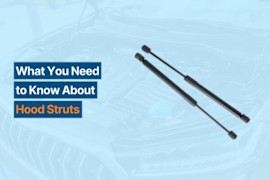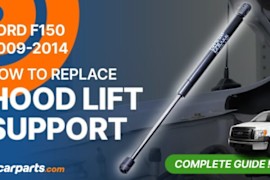{
"lazyNodes": false,
"abFitnotesFlag": false,
"abCrawlReviews": false,
"productOptionsCookie": false,
"orderDelayFlag": false,
"skipSessionCookie": false,
"covidMessage": false,
"fullTitleCookie": false,
"nrLoggerCookie": false,
"checkoutReviewCookie": false,
"productOptionSeqCookie": false,
"maintenanceFlag": false,
"bufferETACookie": false,
"multiShippingDiscountFlag": false,
"newFitmentFlag": false,
"surveyOptInFlag": false,
"crossSellFlag": false,
"skuMappingFlag": false,
"paySplitCookie": false,
"callDisableFlag": false,
"zipPaymentFlag": "u",
"hassleFreeReturn": false,
"lifetimeReplacement": false,
"cpn_off": false
}Lincoln Lift Supports
Shop Catalog
![]() WARNING: This product can expose you to chemicals including Lead, which is known to the State of California to cause cancer and birth defects or other reproductive harm. For more information go to www.P65Warnings.ca.gov.
WARNING: This product can expose you to chemicals including Lead, which is known to the State of California to cause cancer and birth defects or other reproductive harm. For more information go to www.P65Warnings.ca.gov.
![]() WARNING: This product can expose you to chemicals including Lead, which is known to the State of California to cause cancer and birth defects or other reproductive harm. For more information go to www.P65Warnings.ca.gov.
WARNING: This product can expose you to chemicals including Lead, which is known to the State of California to cause cancer and birth defects or other reproductive harm. For more information go to www.P65Warnings.ca.gov.
![]() WARNING: This product can expose you to chemicals including Lead, which is known to the State of California to cause cancer and birth defects or other reproductive harm. For more information go to www.P65Warnings.ca.gov.
WARNING: This product can expose you to chemicals including Lead, which is known to the State of California to cause cancer and birth defects or other reproductive harm. For more information go to www.P65Warnings.ca.gov.
![]() WARNING: This product can expose you to chemicals including Lead, which is known to the State of California to cause cancer and birth defects or other reproductive harm. For more information go to www.P65Warnings.ca.gov.
WARNING: This product can expose you to chemicals including Lead, which is known to the State of California to cause cancer and birth defects or other reproductive harm. For more information go to www.P65Warnings.ca.gov.
![]() WARNING: This product can expose you to chemicals including Lead, which is known to the State of California to cause cancer and birth defects or other reproductive harm. For more information go to www.P65Warnings.ca.gov.
WARNING: This product can expose you to chemicals including Lead, which is known to the State of California to cause cancer and birth defects or other reproductive harm. For more information go to www.P65Warnings.ca.gov.
![]() WARNING: This product can expose you to chemicals including Lead, which is known to the State of California to cause cancer and birth defects or other reproductive harm. For more information go to www.P65Warnings.ca.gov.
WARNING: This product can expose you to chemicals including Lead, which is known to the State of California to cause cancer and birth defects or other reproductive harm. For more information go to www.P65Warnings.ca.gov.
![]() WARNING: This product can expose you to chemicals including Lead, which is known to the State of California to cause cancer and birth defects or other reproductive harm. For more information go to www.P65Warnings.ca.gov.
WARNING: This product can expose you to chemicals including Lead, which is known to the State of California to cause cancer and birth defects or other reproductive harm. For more information go to www.P65Warnings.ca.gov.
![]() WARNING: This product can expose you to chemicals including Lead, which is known to the State of California to cause cancer and birth defects or other reproductive harm. For more information go to www.P65Warnings.ca.gov.
WARNING: This product can expose you to chemicals including Lead, which is known to the State of California to cause cancer and birth defects or other reproductive harm. For more information go to www.P65Warnings.ca.gov.
![]() WARNING: This product can expose you to chemicals including Lead, which is known to the State of California to cause cancer and birth defects or other reproductive harm. For more information go to www.P65Warnings.ca.gov.
WARNING: This product can expose you to chemicals including Lead, which is known to the State of California to cause cancer and birth defects or other reproductive harm. For more information go to www.P65Warnings.ca.gov.
![]() WARNING: This product can expose you to chemicals including Lead, which is known to the State of California to cause cancer and birth defects or other reproductive harm. For more information go to www.P65Warnings.ca.gov.
WARNING: This product can expose you to chemicals including Lead, which is known to the State of California to cause cancer and birth defects or other reproductive harm. For more information go to www.P65Warnings.ca.gov.
![]() WARNING: This product can expose you to chemicals including Lead, which is known to the State of California to cause cancer and birth defects or other reproductive harm. For more information go to www.P65Warnings.ca.gov.
WARNING: This product can expose you to chemicals including Lead, which is known to the State of California to cause cancer and birth defects or other reproductive harm. For more information go to www.P65Warnings.ca.gov.
![]() WARNING: This product can expose you to chemicals including Lead, which is known to the State of California to cause cancer and birth defects or other reproductive harm. For more information go to www.P65Warnings.ca.gov.
WARNING: This product can expose you to chemicals including Lead, which is known to the State of California to cause cancer and birth defects or other reproductive harm. For more information go to www.P65Warnings.ca.gov.
![]() WARNING: This product can expose you to chemicals including Lead, which is known to the State of California to cause cancer and birth defects or other reproductive harm. For more information go to www.P65Warnings.ca.gov.
WARNING: This product can expose you to chemicals including Lead, which is known to the State of California to cause cancer and birth defects or other reproductive harm. For more information go to www.P65Warnings.ca.gov.
![]() WARNING: This product can expose you to chemicals including Lead, which is known to the State of California to cause cancer and birth defects or other reproductive harm. For more information go to www.P65Warnings.ca.gov.
WARNING: This product can expose you to chemicals including Lead, which is known to the State of California to cause cancer and birth defects or other reproductive harm. For more information go to www.P65Warnings.ca.gov.
![]() WARNING: This product can expose you to chemicals including Lead, which is known to the State of California to cause cancer and birth defects or other reproductive harm. For more information go to www.P65Warnings.ca.gov.
WARNING: This product can expose you to chemicals including Lead, which is known to the State of California to cause cancer and birth defects or other reproductive harm. For more information go to www.P65Warnings.ca.gov.
Top Rated Products
Popular Products
Shopping for Lincoln Lift Support
FAQs—Lincoln Lift Support
- How do lift supports work?
- Can I recharge my car’s lift supports?
- Why should both lift supports be replaced whenever one breaks down?
- Should a lift support be mounted with the shaft up or the shaft down?
- How long do lift supports last?
- How does temperature affect a lift support?
- What’s the difference between a ball and socket lift support with a claw-type lift support?
Lift supports look a lot like the shocks in a car’s suspension system, but unlike a shock that dissipates energy, lift support stores energy via compressed gas. When the lift support is closed, energy is stored within the lift support’s cylinder. But once opened, the energy from the gas is released and holds the weight of the hatch, hood, or trunk at the other end in an open position.
Recharging a lift support is not advisable due to the dangers from doing so. A modern lift support typically stores gas compressed at 1,500 psi or higher, so even at a weakened state, any attempt to recharge a support by hand would risk body harm. So once a lift support breaks down, have it replaced with a new one instead.
It is widely recommended to replace both lift supports even if only one has failed because it prevents twisting caused by uneven load. A lift support shares the exact amount of pressure with the support it is paired with, so if one is removed and replaced with a different support, the balance of pressure is upended.
The orientation of the shaft on your vehicle should depend on the instructions specified on the installation manual, but if there is no specific instruction, it is recommended to have the support mounted with the shaft down. A “shaft down” position enables the piston assembly of the lift support to become fully lubricated with oil after every stroke, ensuring maximum damping or “cushion” is achieved at the end of each stroke. This orientation also allows the oil to lubricate rubber seals, protecting wear and corrosion in the process, and reduces the rate of gas that naturally comes out of the seal.
The service life of a lift support varies widely due to a variety of factors, including size, ambient temperature, frequency of cycles, vibration, and the orientation of the unit in the vehicle. Even the rate of which the gas escapes the cylinder will also affect a lift support’s service life. While there is a magic number with regards to a lift support’s service life, what is certain is that it will lose pressure and fail over time. Because of this, it is advised to periodically check the supports to ensure that they are functioning as normal, preferably as part of a scheduled maintenance of your vehicle.
Temperature of lift supports the performance of a lift support in two ways, namely changes in output force and higher susceptibility to gas loss. When the ambient temperature of the lift support is changed, the internal pressure of the unit also changes accordingly. Thus, a temperature increase will also lead to an increase in the internal pressure of the lift support, which in turn increases the output force. Very high or low temperatures can also significantly affect the ability of a lift support to retain its gas charge. During high temperature conditions, the rubber seals of the support become more permeable and allow gases to pass through faster. On the other hand, in low temperatures the rubber seals stiffen and lose their ability to seal properly.
Many lift supports today are fitted with specially designed seals to minimize the effects caused by extreme temperature changes, but these do not completely protect them from it. This is why, it is advised to avoid using the lift support under very hot or cold conditions to prolong its service life.
Ball and socket lift supports are almost identical to claw-type lift supports except the former is mounted onto the vehicle via a ball and socket, while the latter is mounted using a claw and a ball stud. Most lift supports are grouped into these two types, so when replacing worn lift supports make sure that the replacement matches the mounting that is specified for your vehicle to ensure that they will mount properly.

































